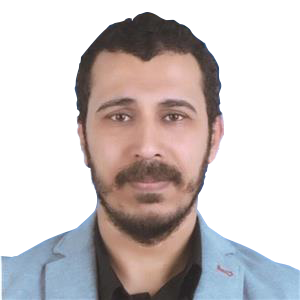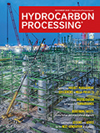Utilize a process simulation digital twin to optimize condensate yield
With the aim to maximize profit, and contribute to sustainability targets by reducing greenhouse gas emissions, ADNOC Sour Gas has optimized condensate hydrotreater operation by adjusting Reid vapor pressure, which resulted in maximizing condensate yield. This article is a case study on using a process digital twin to optimize condensate yield.
IP: 10.3.96.105
This is a preview of our premium content. Thank you for your interest—please
log in or
subscribe to read the full article.
The Authors
Kaleem, J. - ADNOC Sour Gas, Abu Dhabi, UAE
Jawwad Kaleem is an energy sector professional and chemical engineer with 15 yr of experience working in the upstream (E&P) and downstream sectors (refining and fertilizers) in the areas of projects, process engineering and operations. He works as Manager, Engineering Projects, at ADNOC Sour Gas, where he is involved in ongoing and future strategic projects (e.g., optimum Shah gas expansion, the Shah 1.85-Bft3d expansion and CO2 recovery project). Kaleem has implemented various digitalization and technology initiatives in processing plants (e.g., advance process controls, open loop advisory systems using AI and machine-learning capabilities, ProActive Smart Monitoring tools), which have helped in enhancing yields, energy optimization and GHG emissions reductions.
Al Ali, E. - ADNOC Sour Gas, Abu Dhabi, UAE
Eman Alali is a dynamic process simulation engineer, with a BS degree in chemical engineering, an MBA and more than 4 yr of experience in the ultra-sour gas processing field. Elali is highly engaged in the ADNOC’s strategic projects, including the expansion to 1.45 Bft3d and CO2 recovery projects. Adding to her experience, she has gained many certifications in her field, including that of a certified ProMax User.
Allanaboyina, V. - ADNOC Sour Gas, Abu Dhabi, UAE
Veera Allanaboyina is a Senior MES Consultant with 11 yr of experience working alongside multinational corporations and startups. He specializes in providing custom solutions for process engineering and production planning areas, and employs his skills to contribute to the exciting technological advances within the oil and gas segment. Allanaboyina graduated from the Indian Institute of Technology, and has worked within AVEVA (Schnieder Electric) and startups in various domains like OTS, steady-state simulations, hydrocarbon accounting and optimization technologies. He works supporting drilling, subsurface, process engineering and technical engineering services.
Srinivas, R. - ADNOC Sour Gas, Abu Dhabi, UAE
Ravi Srinivas works as a Process Manager for ADNOC Sour Gas and has 35 yr of experience in gas processing and petroleum refining in the areas of technology licensing, process modeling, engineering, technical services, plant operations and catalyst sales. He has held various management positions in major technology/engineering and operating companies, including Worley, DuPont, BASF, QP and HPCL.
E. Gebesy - Aspen Technology,
Dr. Emad Gebesy has Chemical Engineering background with 17 years of experience in the oil and gas and energy transition industry, as leading provider of AI-driven industrial & Digital solutions. Emad also possess a chartered engineer and a certified professional degrees in process safety engineering, HAZOP, LOPA, SIL, and QRA from IChemE in UK.
S. Sheikh - Aspen Technology, UAE
Saif Sheikh is Sr. Director of Solution Consulting at Aspen Technology in the Middle East & Africa (MEA) region. In his role he supports the MEA region’s leading Oil & Gas companies with a team of experts enabling solutions that address Sustainability, Profitability and Digitalization (AI/ML). Saif holds an MSc in Chemical Engineering. Saif has more than 25 years’ experience in Process Engineering, Modelling and Simulation in the Oil & Gas/Refining domain. Saif has spoken at several events and supported ADIPEC, EMET, MEPEC, GDA, SPE AI forum as a key technical committee member and moderator. Saif has published his works in several conferences and journals. Saif loves reading, cricket and yoga.
Related Articles
From the Archive












Comments